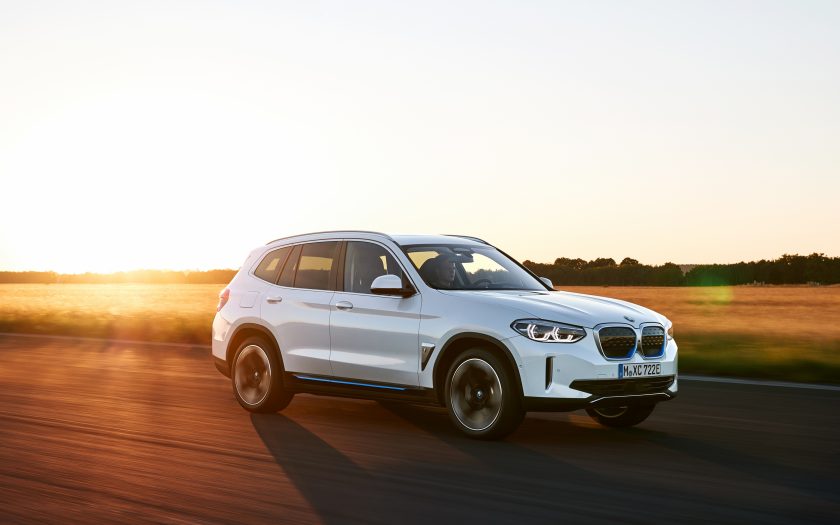BMW’S FIRST FULLY ELECTRIC core X model will showcase the fifth generation of eDrive technology, and it will be in Australian showrooms around the middle of next year.
The iX3 blends emission-free driving pleasure with BMW’s renowned sporting ability and the multi-faceted functionality of a Sports Activity Vehicle (SAV).
The new BMW iX3 also embodies BMW’s strategic “Power of Choice” approach, ensuring an innovative product that caters to the broad variety of customer powertrain requirements and statutory regulations around the world.
By next year, the BMW X3 will be the first core model available in Australia with the option of highly efficient petrol engines, diesels and a fully electrified drive system.
The BMW iX3 will also be the brand’s first model to be built for export at the Shenyang plant in China, operated by joint venture BMW Brilliance Automotive.
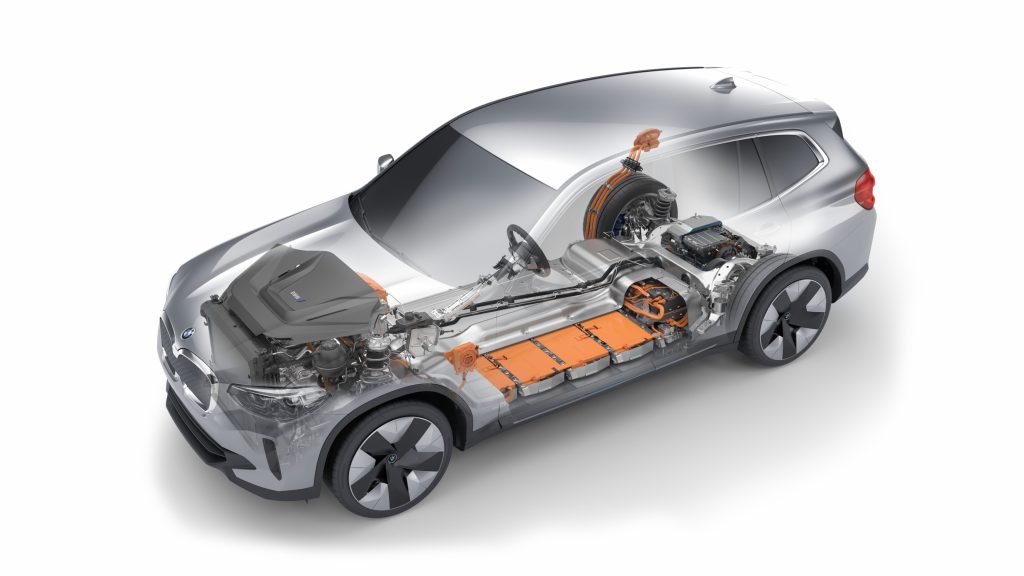
Premiere of fifth-generation BMW eDrive technology
The new BMW iX3 showcases BMW’s fifth-generation eDrive technology.
The latest versions of the electric motor, power electronics, charging technology and high-voltage battery sees substantial progress in the areas of performance characteristics, electric power consumption and range in a highly-integrated drive system.
The electric motor, transmission and power electronics on the BMW iX3 are now arranged together in a single housing. The electric motor works according to the principle of a current-excited synchronous motor without the use of magnets.
This design allows rare earths to be avoided entirely in the manufacturing of the motor.
The power density of the electric motor in the BMW iX3 is 30 percent greater than that of existing fully electric vehicles from the BMW Group and exhibits efficiency of up to 93 percent.
This is in stark contrast to efficiency figures of just under 40 percent for combustion engines.
The new drive system unit generates maximum output of 210kW and peak torque of 400Nm which, unlike with many other electric motors, is sustained at high revs.
The new BMW iX3 sprints to 100km/h in 6.8 seconds, putting it on equal footing with the conventionally powered BMW X3 xDrive30i. Top speed is electronically limited to 180km/h.
Power is sent to the rear wheels for the classic BMW driving experience.
Cutting-edge battery cell technology results in substantially increased battery capacity relative to dimensions and weight. Energy density of the 188 prismatic cells in the new BMW iX3 is around 20 percent higher than comparable current BMW Group batteries for fully electric vehicles up to now.
A gross energy content of 80kWh – of which 74kWh is utilised – and the high efficiency of the drive systems allow the new BMW iX3 to offer a range of up to 460 kilometres in the WLTP test cycle.
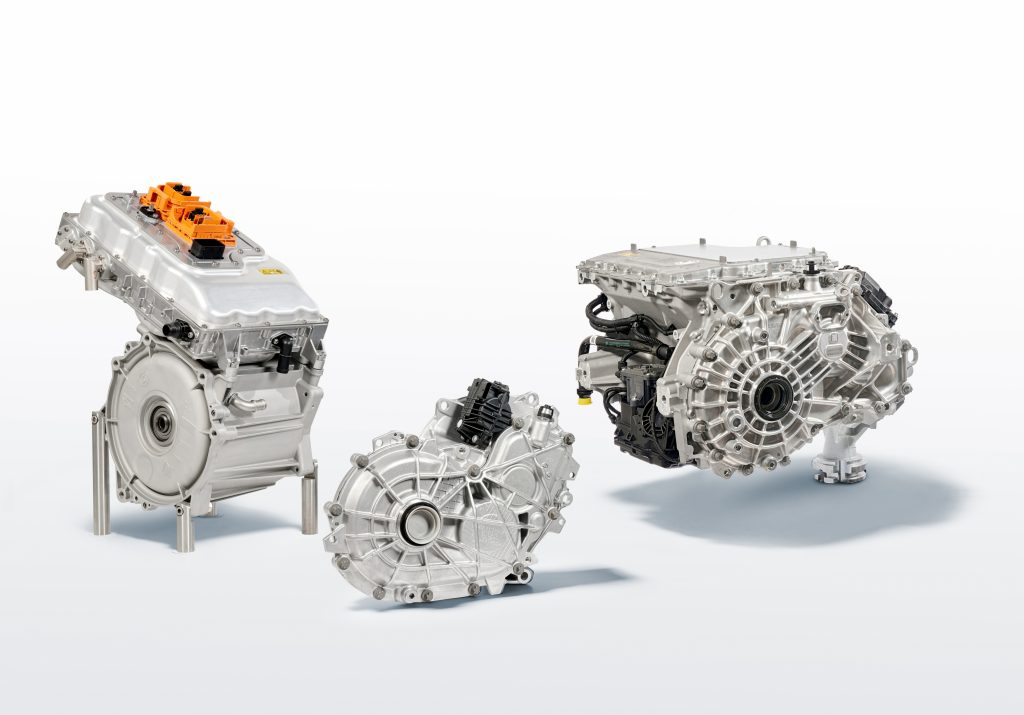
The iX3’s innovative charging unit sends power to both the 400V battery and the 12V on-board power supply.
When using AC terminals, it enables both single-phase and three-phase charging at up to 11kW. Plugging the vehicle in to a DC fast-charging station further facilitates charging outputs of up to 150kW.
As a result, the high-voltage battery in the new BMW iX3 can be charged from 0 to 80 percent capacity in just 34 minutes. Drivers can add up to 100 kilometres of range to the car after just 10 minutes of charging.
The exceptionally efficient drive system, extensive use of secondary raw materials in the manufacture of aluminium castings and thermoplastics, the absence of rare earths and the across-the-board use of green electricity in production – including the cells for the high-voltage battery – all contribute to a remarkably impressive CO2 assessment for the new BMW iX3.
Optimised efficiency enhances capability over long distances
Fifth-generation eDrive technology combines with advanced innovations to give the BMW iX3 extraordinary long-distance capability. Adaptive energy recuperation tools enhance efficiency and driving comfort during journeys.
The intensity of the Brake Energy Regeneration is automatically adapted to the road situation, facilitated by data from the navigation system and the driver assistance system sensors. For example, when approaching a junction, a speed-restricted stretch of road or a vehicle on the road ahead, recuperation is fully utilised.
Meanwhile, on the open road or motorway, the coasting function is activated whenever the driver takes their foot off the accelerator.
As an alternative to adaptive recuperation and when in driving position D, the driver can choose a high, medium or low Brake Energy Regeneration setting.
Engaging position B generates the signature one-pedal feeling of the BMW Group’s electric vehicles by providing particularly strong recuperation.
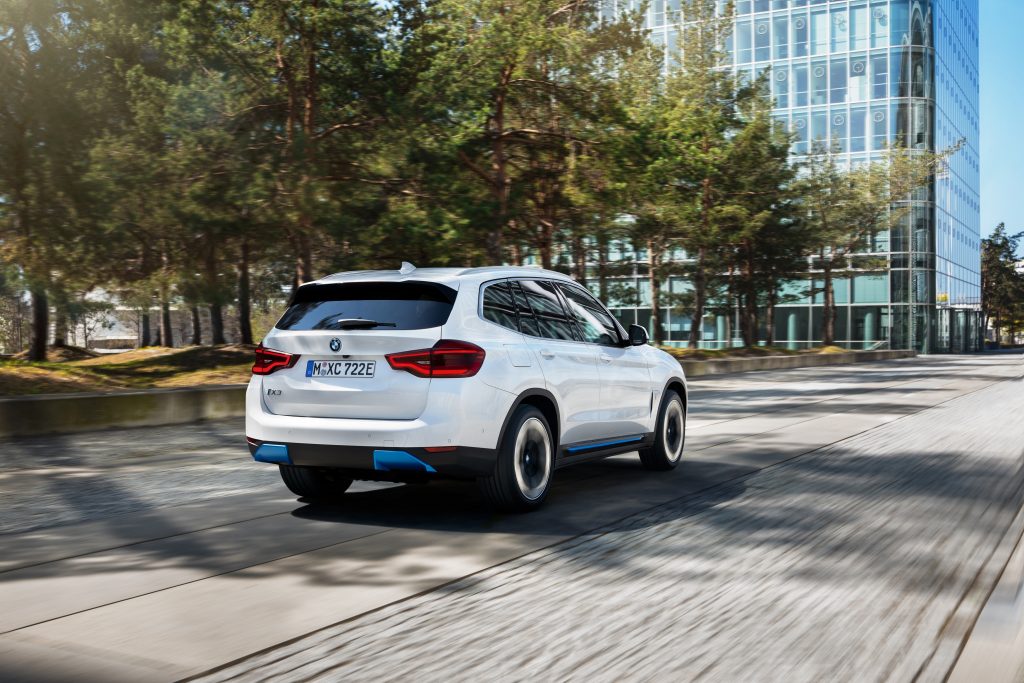
Sporty handling, excellent traction
The iX3’s latest-generation high-voltage battery exhibits a particularly slim construction, integrated low into the SAV’s flexible vehicle architecture to enable a centre of gravity around 7.5cm lower compared with its conventionally powered BMW X3 siblings for enhanced lateral dynamics.
Among many bespoke elements of the BMW iX3’s chassis construction is a new rear axle subframe that offers the required installation space for the drive system unit.
The standard adaptive suspension includes electronically-controlled dampers that continuously alter settings to adapt to the road surface and situation at hand. This enables carefully judged optimisation of the car’s ride comfort and dynamics.
A highly-responsive ARB (wheel slip regulation) system, controlled via engine computer rather than signals from wheel sensors, gives the new BMW iX3 outstanding traction in adverse weather conditions and on loose surfaces despite only being driven via a single axle.
New BMW charging and digital services
The BMW iX3 integrates the electrified vehicle lifestyle with extensive product offerings from the BMW 360-degree Electric programme first launched by the BMW Group in 2013.
The newly developed Flexible Fast Charger cable will be available for the first time on the new BMW iX3 and can be hooked up to both domestic and industrial sockets with adapters.
In addition, a Smart Wallbox will be made available through various partners depending on the market. It can be integrated into an existing home power management system, enabling record-keeping of energy expenditure for home charging.
The new cloud-based navigation system, BMW Maps, enables route and arrival times to be calculated with even greater speed and precision.
When planning a route and calculating the arrival time, the E-Route function offers improved recommendations for mid-journey stops to charge the high-voltage battery.
It also provides useful information on charging stations, such as availability, connector type, rate of charging and authentication method required, as well as points of interest in the surrounding area.
The BMW iX3 is equipped as standard with BMW Operating System 7.0, allowing every line of software code in the car to be updated over the air.
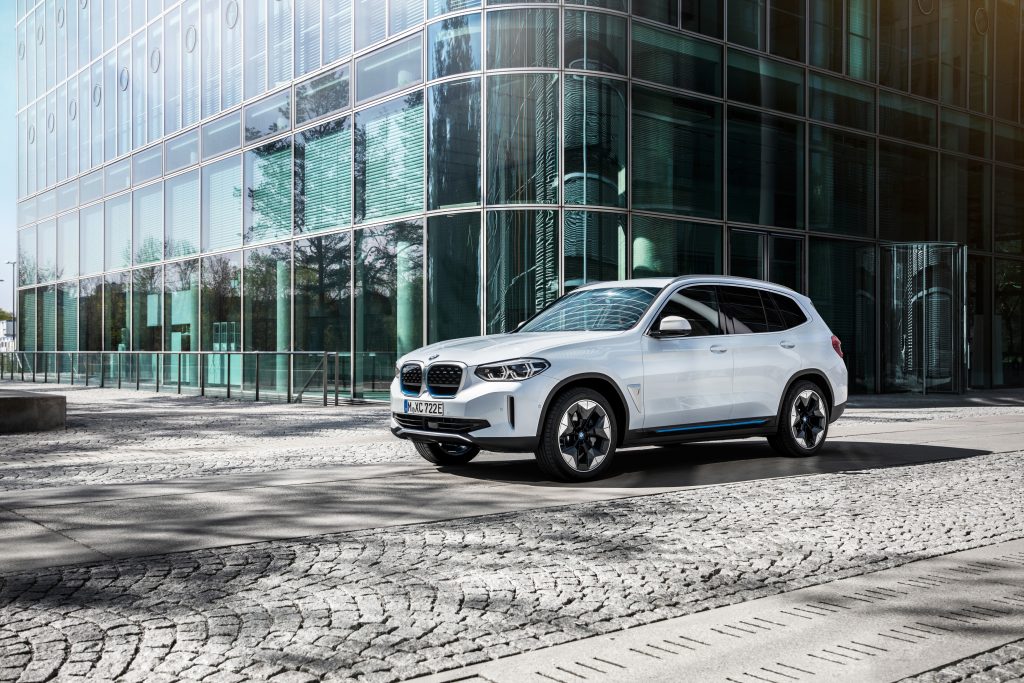
Proportions and versatility of an SAV
The exterior design of the new BMW iX3 retains proportions of an SAV, maintaining visual all-round purposefulness and a robust premium character.
Model-specific design features optimise the car’s aerodynamic properties while lending visual expression to its sustainability-focused drive concept. The front apron and BMW kidney grille have a largely enclosed design, while the rear end has also been sculpted in order to reduce air resistance.
Innovative, aerodynamically designed light-alloy wheels help to control the flow of air around the vehicle. This is achieved with the help of sophisticated inserts in the V-spoke base wheel, keeping air flowing far more smoothly.
The result is a drag coefficient reduced by around five percent over an equivalent vehicle with conventional light-alloy wheels and an addition of around 10 kilometres to the car’s range.
Other aerodynamic enhancements include modifications to the underbody’s rear diffuser and chassis strut area, as well as with the air flap control system. All aspects combine to give the all-electric SAV a drag coefficient (Cd) of just 0.29.
Premium ambience and BMW IconicSounds Electric in the interior
High quality materials, clearly-structured controls and stylish designs integrated with understated blue accents both outside and in provide the new BMW iX3 a highly premium ambience typically associated with a BMW SAV.
Versatility is also reflected with spaciousness comparable with conventionally powered BMW X3 model variants. Thanks to the 40:20:40 split/folding rear seat backrest, load capacity can be increased from 510 to a maximum of 1560 litres.
The debut of BMW IconicSounds Electric in the BMW iX3 provides acoustic feedback to enrich the electric driving experience.
Every driving state is accompanied by a matching acoustic pattern. When the Start/Stop button is pressed, a short sound composition can be heard, setting the scene for the electric driving experience. Load changes are signalled by a smoothly modulated sound, while recuperations during overrun and braking are marked by a gently filtered acoustic response.
The drive sound is an original work by BMW’s sound designers and acoustic engineers, the first sound originating from the collaboration between Hans Zimmer and BMW sound designer Renzo Vitale to feature in a production vehicle.
More drive soundtracks from the collaboration with Hans Zimmer will become available in electrified BMW models at a later date.
The BMW iX3 will arrive in Australia by mid-2021 with information on pricing and equipment levels to be announced closer to market launch.
